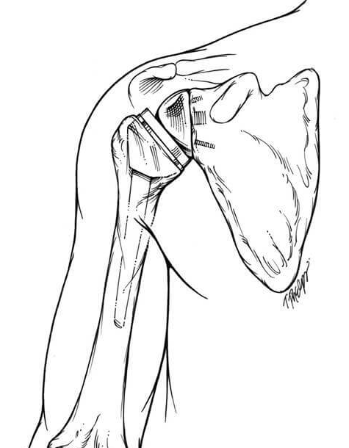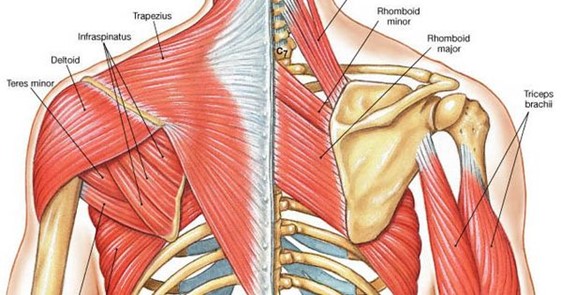Shoulder Injury Found to Extend Into the Body as a Whole
- Jun 25, 2021
Numerous decisions have interpreted the definition of “shoulder” since the Iowa legislature added it as a scheduled member under Iowa Code 85.34(n) in 2017. The most recent decision came on June 17, 2021 by Deputy Commissioner James Christenson in Bolinger v. Trillium Healthcare Group, LLC. Thus far, decisions have developed the definition of shoulder to include the rotator cuff muscles (Deng), labrum, and acromion (Chavez). Deputy Christenson distinguished this case from others, and concluded this permanent partial disability resulted from an injury to the body as a whole.
Claimant Bolinger had a pre-existing injury to her left shoulder resulting in bursitis with capsulitis. While employed by the Defendant, the Claimant
fell on her left side and dislocated her shoulder. She underwent a shoulder reduction procedure, but continued to have pain and a limited range
of motion. An MRI revealed subluxation of the glenohumeral joint, full thickness tears of the supraspinatus and subscapularis tendons, a partial
tear of the infraspinatus tendon, and a torn biceps tendon.
Her treating physician did not believe the shoulder was fixable, and recommended a reverse shoulder replacement. This procedure is unique in that a prosthetic ball is pinned into the scapula (shoulder blade) and connects with a prosthetic joint that is placed into the arm bone (see Figure 1). In effect, the ball and socket are reversed from the natural shoulder (see Figure 2), and the surrounding muscles are utilized differently. Following surgery, the Claimant had an independent medical evaluation (IME) with Dr. Stoken, who found a 24 percent permanent impairment to the upper extremity, which converts to a 14 percent permanent impairment to the body as a whole.


FIGURE 1
FIGURE 2
(Source: Johns Hopkins Medicine)
Dr. Stoken opined that a reverse total shoulder arthroplasty extends proximally beyond the shoulder joint due to involvement of periscapular muscles and tendons, such as the rhomboids and trapezius (see Figure 3). This procedure and post-operative physical therapy do not include the rotator cuff muscles, but rather the muscles of the upper back, which are proximal to the shoulder joint. For this reason, the Claimant’s shoulder injury was found to extend into the body as a whole.

FIGURE 3
Generally, compensation for unscheduled, body as a whole injuries is “paid during the number of weeks in relation to five hundred weeks as the reduction
of the employee’s earning capacity.” Iowa Code § 85.34(2)(v). However, if an employee returns to work or is offered work for the same or greater earnings
as the time of injury, then the employee will be compensated based on their functional impairment rather than their reduction in earning capacity.
Claimant Bolinger returned to work with the Defendant at a higher wage. Therefore, she was statutorily limited to functional impairment of her injury,
or 96 weeks of permanent partial disability benefits (400 weeks x 24 percent).
When an employee sustains an injury involving the shoulder region, medical records should be thoroughly reviewed to determine whether the injury involves bones, muscles, and tendons that are on the proximal side or distal side of the glenohumeral (shoulder) joint. Shoulder injuries are more likely to be scheduled when they are on the distal side of the joint, or involve the muscles of the rotator cuff rather than the muscles of the back.
Peddicord Wharton will continue to monitor case law on this issue.
If you'd like to sign up for our e-newsletter, please click here.
~~~~~~~~~~~~~~~~~~~~~~~~~~~
NOTICE TO THE PUBLIC
The determination of the need for legal services and the choice of a lawyer are extremely important decisions and should not be based solely upon advertisements or self-proclaimed expertise. This disclosure is required by rule of the Supreme Court of Iowa.
Peddicord Wharton Legal Updates are intended to provide information on current developments in legislation impacting our clients. Readers should not rely solely upon this information as legal advice. Peddicord Wharton attorneys would be pleased to answer any questions you may have about this update. ©2021 Peddicord Wharton. All Rights Reserved.
Categories
Purpose
Peddicord Wharton has provided practical solutions and exceptional legal service since 1965.
Legal DisclaimerClick here to sign up for our legal updates.
 Proud Member of the NWCDN. A Nationwide Network of Law Firms Practicing in Workers' Compensation.
Proud Member of the NWCDN. A Nationwide Network of Law Firms Practicing in Workers' Compensation.